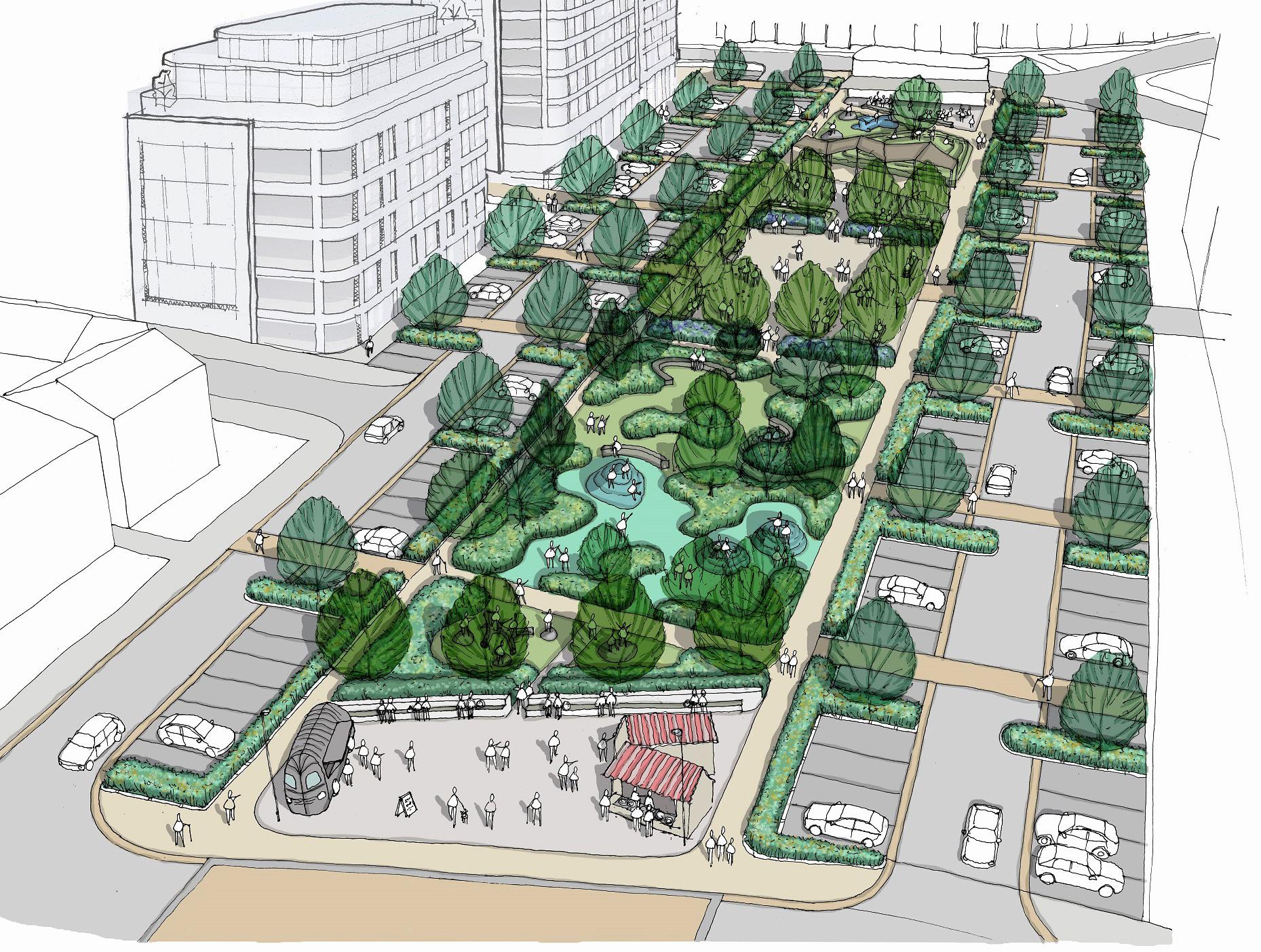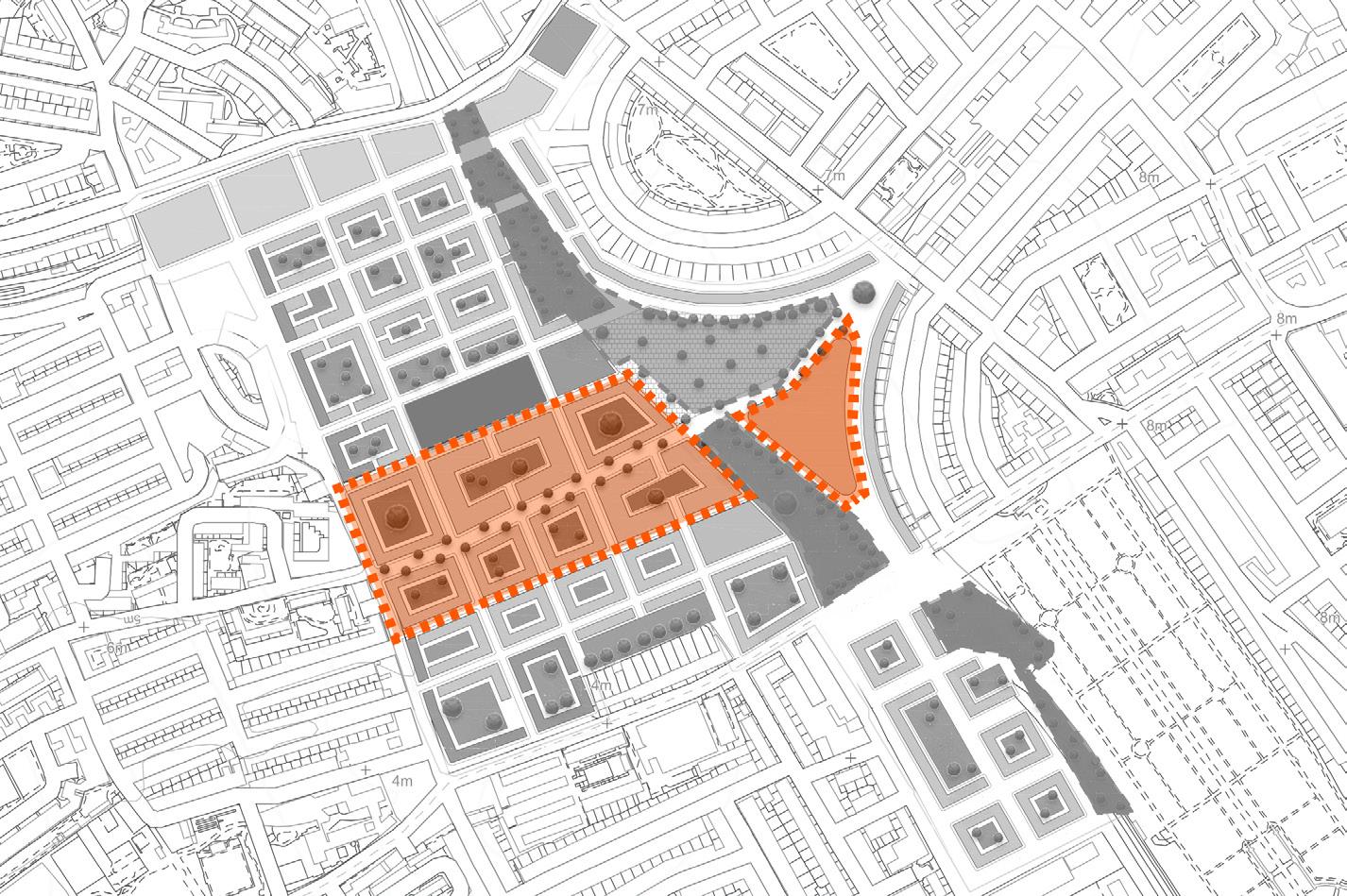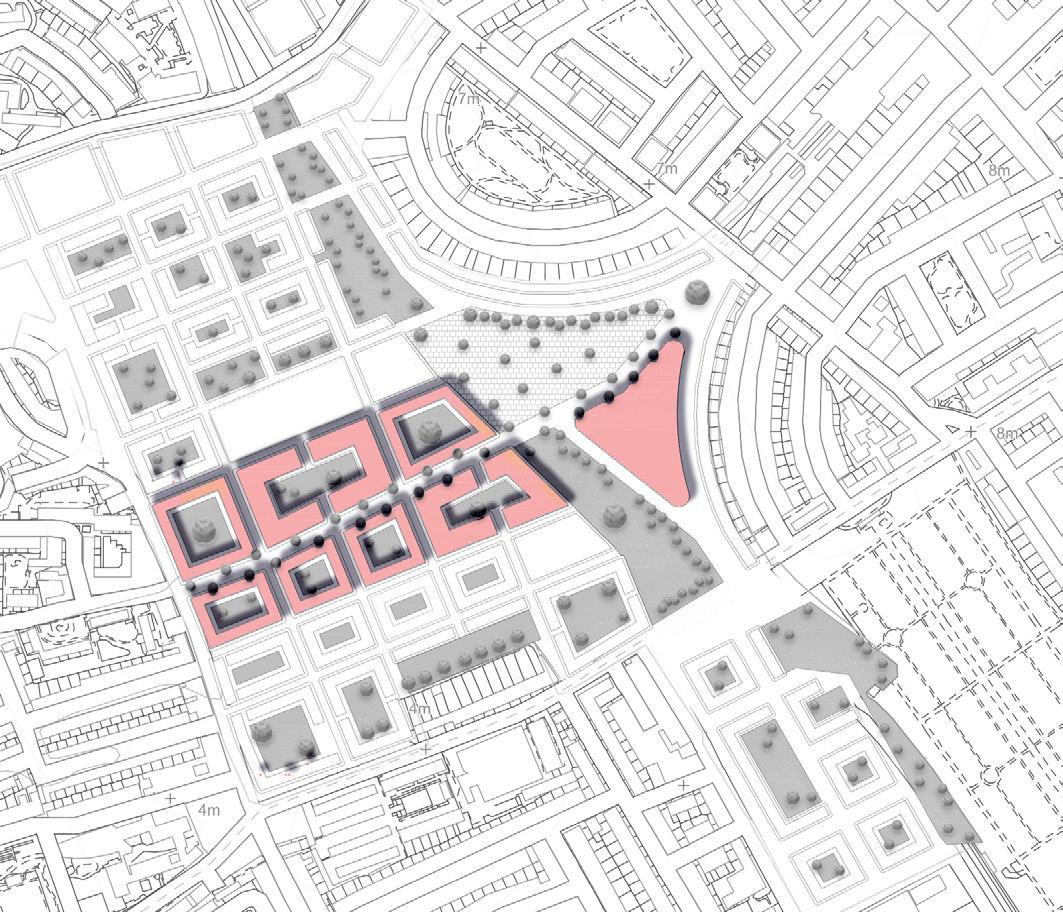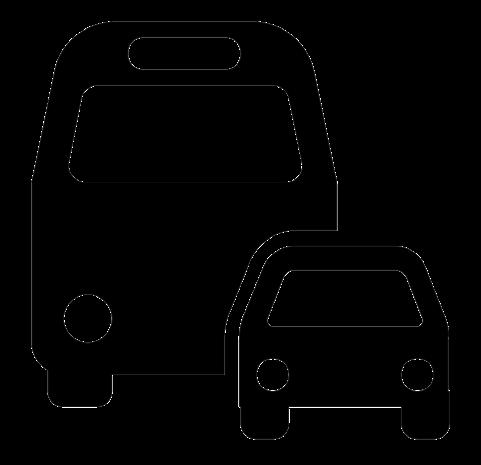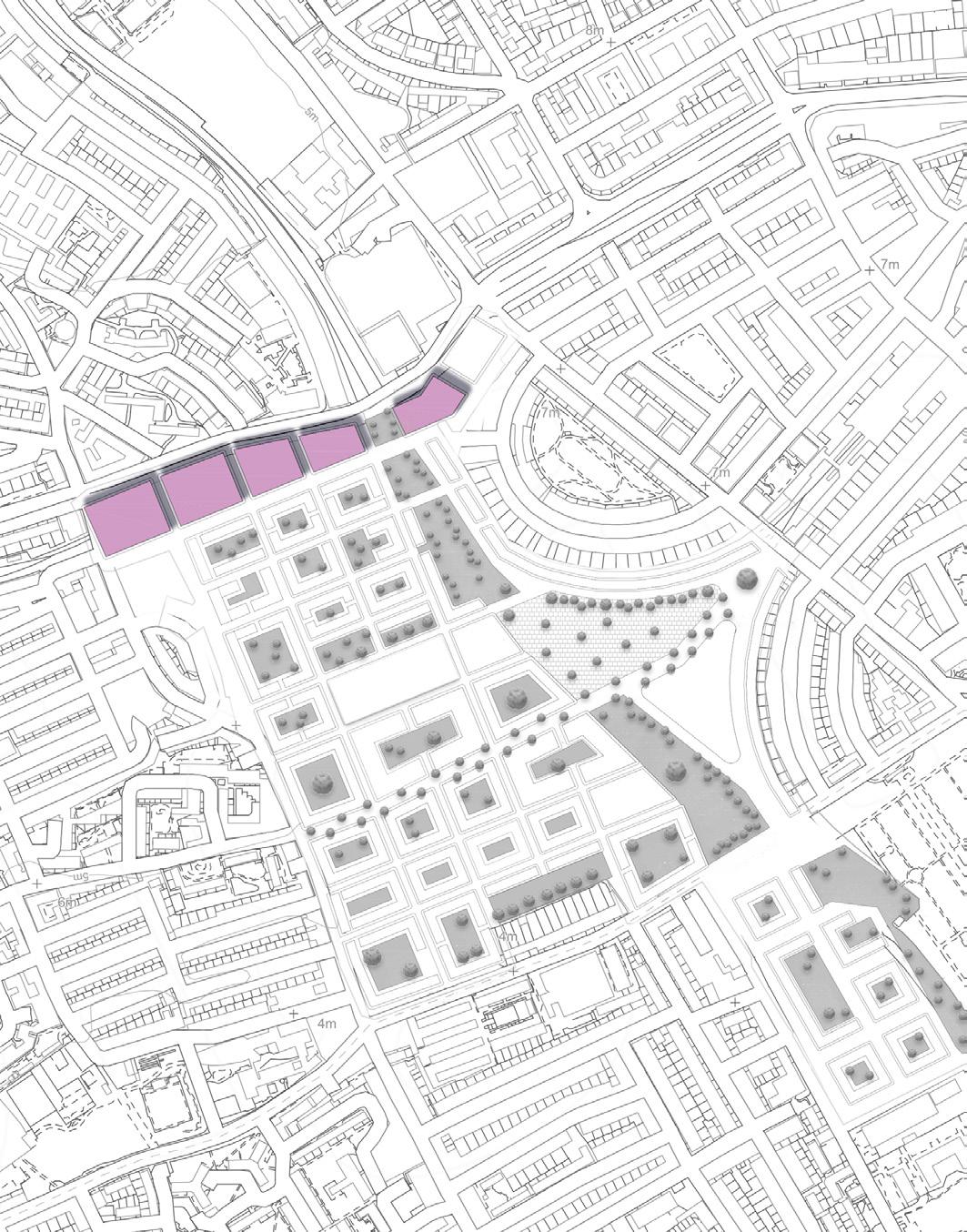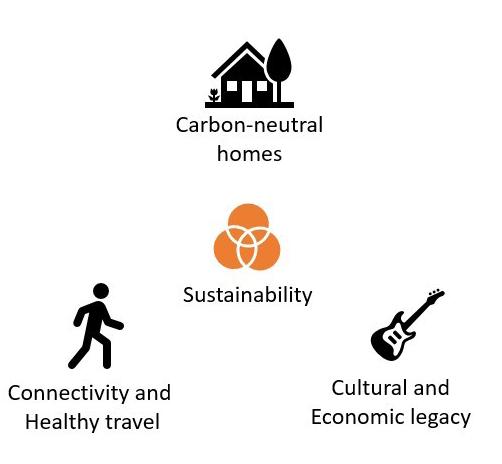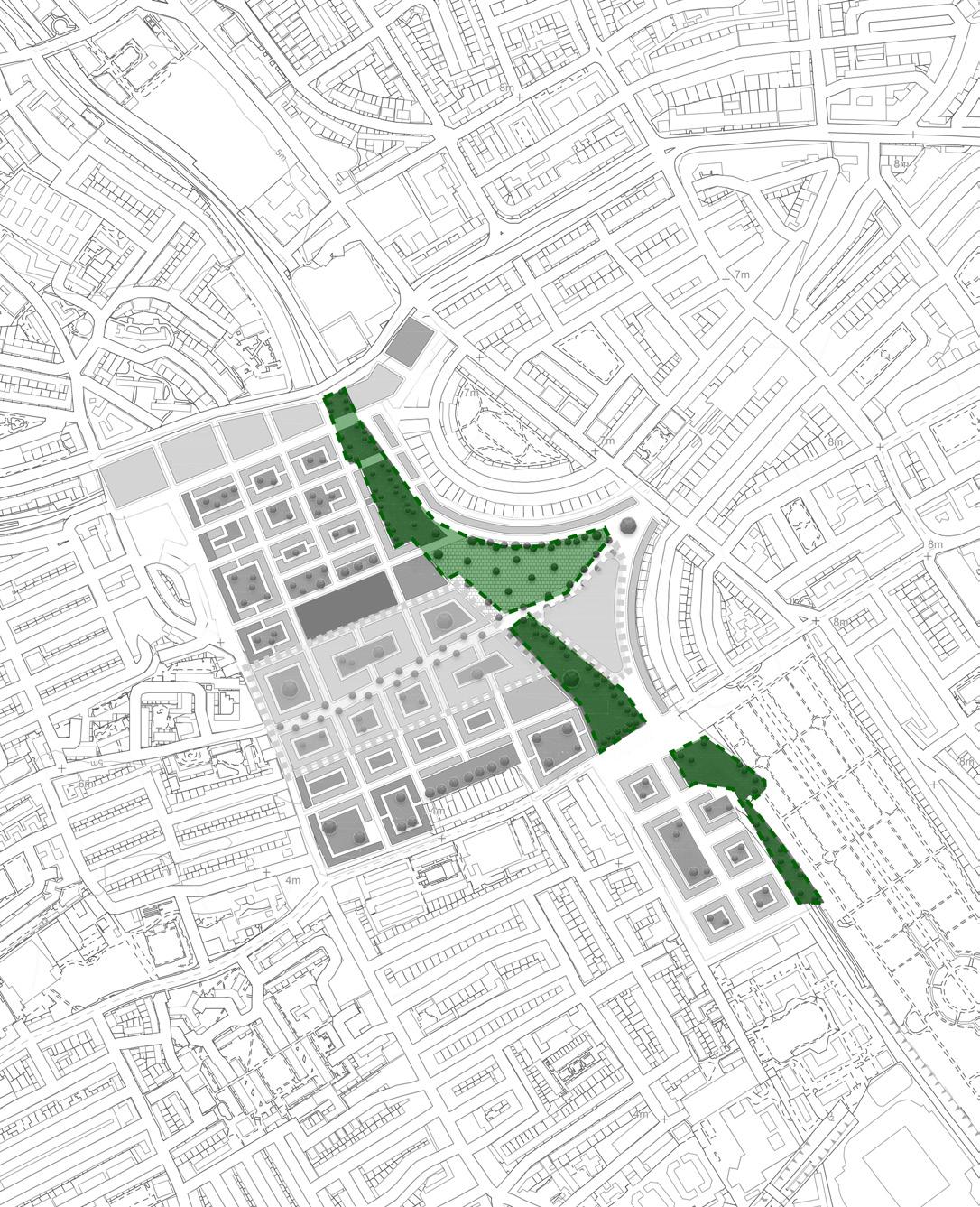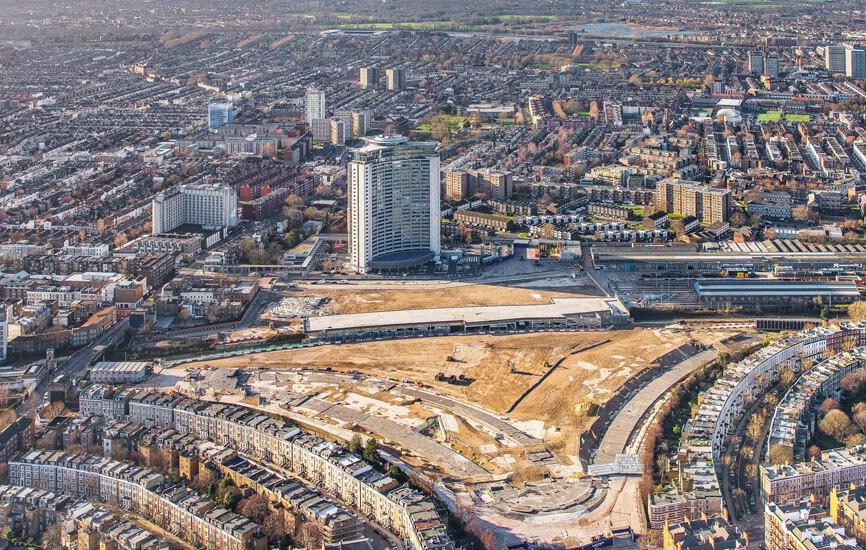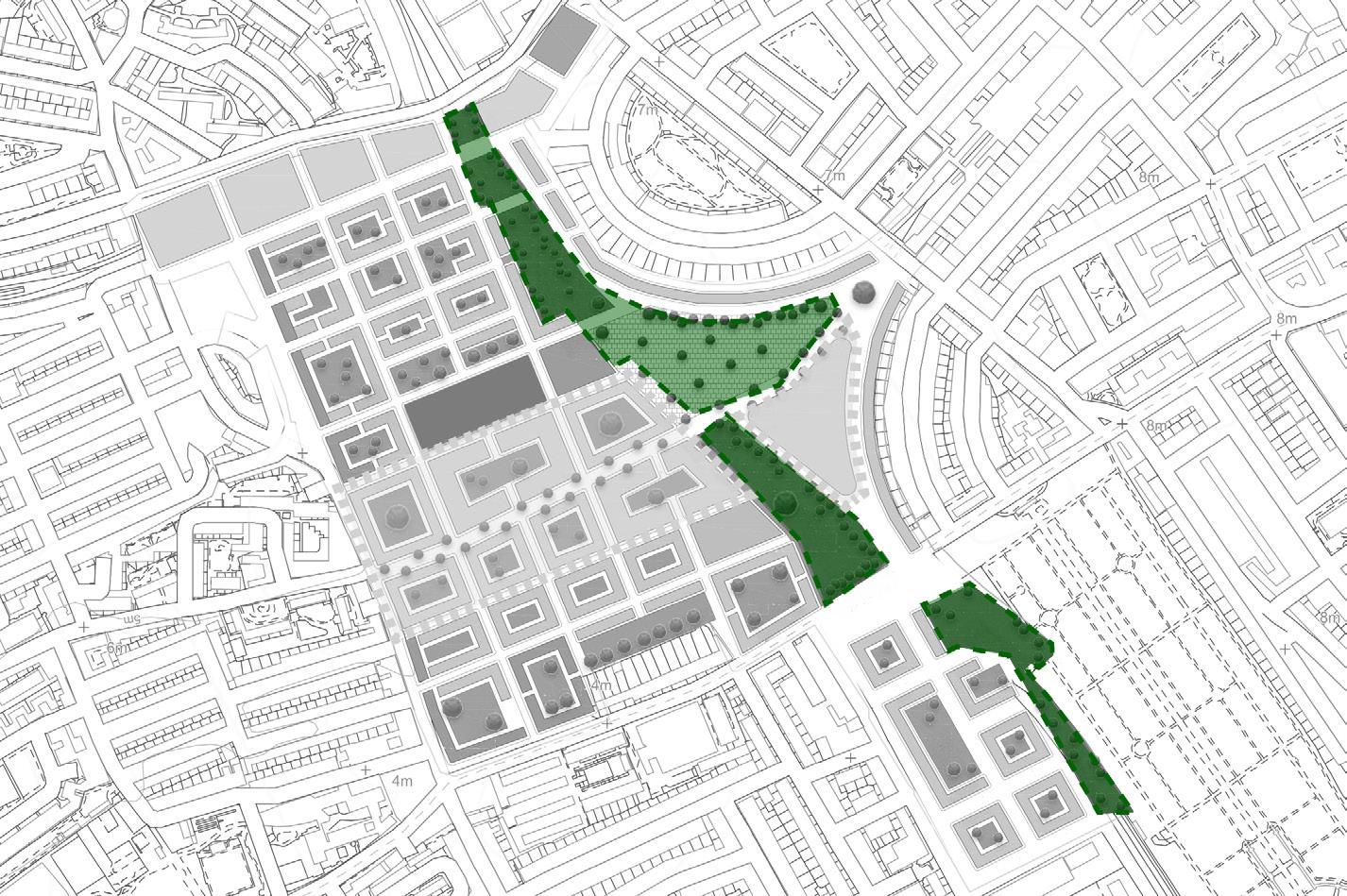
2 minute read
C3.2
from W19P325
by PDF Uploads
Context
The previous SPD provided guidance around street designed underpinned by Transport for London’s Healthy Streets principles, however it did not provide a design code which would significantly address traffic dominance on residential streets.
Desired Outcome
Quiet, traffic free residential streets which preventing rat running traffic with the installation of modal filters and 5mph homezones. Restricting vehicle movement to main roads ensures that residential streets are safe for people of all ages to move, socialise and play. Residential blocks will be car free, apart from disabled drivers The cultural venue will be car free. Visitors must take public transport or take active modes to travel there. Manual and the Barcelona Superblock model.Case study: Federation Square Developers will be expected to produce a masterplan with a planning application which incorporates these design principles.
Case Study - Superblocks, Barcelona
The authors also recently conducted a site visit to Example, Barcelona where the Superblock model is being trialled. This is an approach to street layout which reduces non-local rat running in residential neighbourhoods by forcing drivers in the wider network to use
Formal tools Control Policy Tools Informal tools CABE Openspace Guidance • Joint local authority development plan This SPD proposes development of a detailed design code informed by Sustrans Design the main arterial roads which can accommodate higher levels of traffic.
Formal tools Control
• Planning consent subject to
appropriate masterplan Informal tools
Sustrans Design manual (2014)
Case study: Superblocks, Barcelona Superblocks, Barcelona -Desired objectives This strategy creates an opportunity to greatly increase the amount of public space in a scheme. Considering 80% of public space in London is a street, there is huge potential to reclaim some of this space, making streets safer for people to interact in. It also imroves air quality and addresses sound pollution. Superblocks, Barcelona -Tools used A design code and urban design framework was developed by the city council which was inspired by the woonerfs of Rotterdam. This design code was then implemented in 9 locations across the city.

Transferability
The principle behind the superblock is highly transferable to Earl’s court and the design of low traffic residential streets can be applied (if not identically) to the layout of the residential blocks as shown on the masterplan. The use of a design code and urban design framework was an effective tool to ensure that design was underpinned by specific principles and delivered the desired outcomes of reducing traffic and creating public space.
Limitation
The Superblock case study is known to have limited consulation with social housing residents and as a result is highly controversial. The context is different in Earl’s court however as residents will be new the the area. This type of street design is radical (alongside the car free policy) and may prove difficult to sell to housing developers who will be mindful of existing consumer preferences.
Overall chance of success: 84%
The effectiveness and success of this policy will depend firstly on a sound design code and secondly on the political will of the local planning authorities in partnership with developers to experiment with a different type of street design.

4 Strategic Sites
Cultural Lung Linear Park
